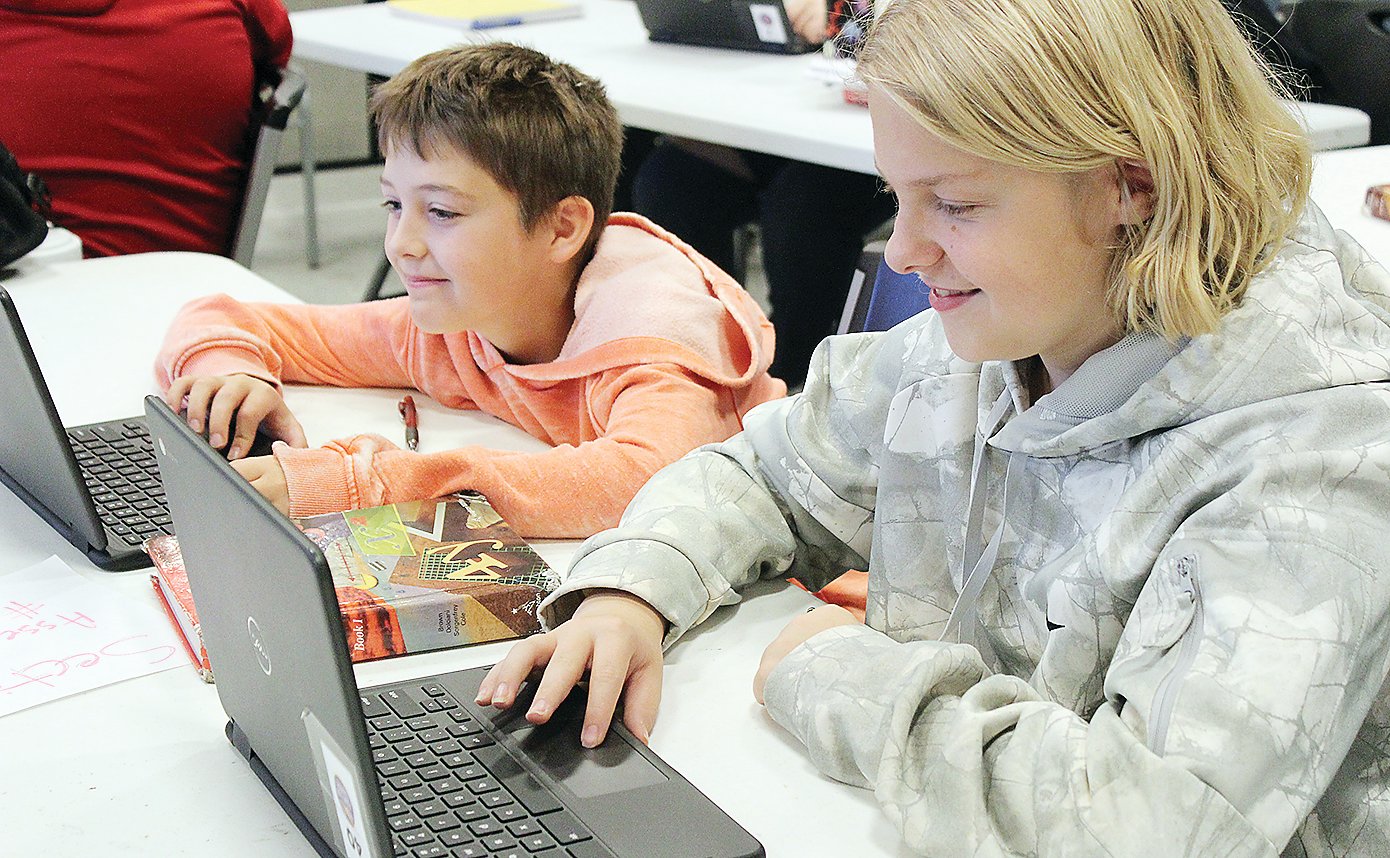Support the Timberjay by making a donation.
Enrollment is booming
Post-COVID, the area charter school has seen student numbers jump sharply
TOWER— What a difference 12 months can make. Last year at this time the Vermilion Country School was facing a budget challenge as two years of the COVID pandemic had left recruitment of students behind the pace necessary to fund the grades 7-12 charter school in the long run.
But as students headed back to school last month, the turnaround here was far beyond what school officials could have predicted, even in their most optimistic moments.
“Enrollment isn’t just up, it’s way up,” said VCS board chair Jodi Summit. “It came in well above our expectations.”
The school, which at times had seemed almost empty last year, is abuzz with student activity these days, as the school has seen almost 20 new students, leaving current enrollment close to 50. That includes the biggest incoming class of seventh and eighth graders at the school in years, which bodes well for the future. The enrollment increase has largely wiped away the school’s financial concerns. In fact, the school’s biggest challenge this year is finding adequate staff. The school is looking to add another full-time teacher and has had to add another van route to pick up all the extra students. And while they have an interim administrator in place, former Ely school principal Laurie Kess, they’re also looking for a permanent director to help lead the growing school. In the meantime, the school is relying on its experienced board, which is much more involved in the day-to-day functioning of the school than a traditional school board, as well as longtime teachers who are truly committed to the school.
Summit said the influx of new students is encouraging and likely the result of a return to normalcy in education in the wake of the pandemic. “Recruitment was really hard during those two COVID years,” Summit said. As seniors graduated those two years, the school didn’t pick up enough younger students to fill the gap. But that’s changed almost overnight.
Summit said she always expected that the enrollment would turn around as word spread about the school’s success with students. The school’s educational model has evolved over the ten years since it opened its doors but has now solidified and is showing good results with students.
Karin Schmidt, a longtime teacher at the school, said it’s been a bit of a pendulum. The school started out with an almost purely project-based model, but when that didn’t fit the needs of students, they shifted to a more traditional approach. Schmidt said the school has now adopted a more balanced approach, with a focus on core subjects in the morning, followed by “flex-time” in the afternoons when students can pursue their interests in a more project-based approach.
Students who need credit recovery can use the flex time to get back to grade level, while those already at grade level can pursue enrichment. Music and art options are always popular, and this year they’ve added a computer coding course. The school also hired a professional chef, Chris Glazer, to prepare the school lunches this year and he’s teaching a cooking course at the school which filled up almost immediately. Schmidt said Glazer brings a wide range of experience and has been a significant addition to the school. “He’s very knowledgeable and really has a lot of energy.”
The school also provides students with a lot of opportunity to learn outside of school. Students go on field trips regularly, often taking part in outdoor activities, sometimes overnight trips as well. They’ve done canoe trips, winter camping, and sailing on Lake Superior just in the past year.
For a time, the school was mostly attracting students who were struggling in traditional schools and had fallen behind grade level— and the school has proven to be effective with such students, getting many of them caught up again and graduated.
“First of all, we meet the students where they’re at,” said Summit. “Every student who comes in has an individual learning plan, so kids who have come in below grade level don’t slip through the cracks.”
This year’s influx of new students is different, however, with most coming in at grade level or above, attracted by the school’s nurturing environment, flexible learning options, and environmental education. Many of the school’s students have traditionally come from Ely, although significant numbers also come from other East Range communities, and a growing number from Tower-Soudan. Two students are even traveling from Nett Lake every day this year to attend.
Schmidt said she expected it would always take time for the school to reach the point where it’s at today. “I think a lot of it is that we’re established now,” she said. “That takes time in a community. Fortunately, we’ve had a few key parents who came in the past year or two, who really helped spread the news.”
Schmidt said she was thrilled this past week during parent-teacher conferences to hear the feedback from parents. “Many of them were really excited that their kids are being successful and really thriving here,” she said.
Schmidt said the flexibility a small school can offer has helped the school succeed, both in its approach to students as well as its ability to take advantage of learning opportunities, inside and outside the classroom, as they arise. “We’re not bound by a rigorous schedule, so we really can be flexible,” she said.
School upgrades
The building that’s housed the charter school for the past ten years has been among the challenges the school has faced. Originally designed for a car wash manufacturer, the pre-engineered metal building has an exceptionally high ceiling, which has made the building costly to heat and not always as comfortable as it could be when temperatures drop below zero. The acoustics are a problem, which can make it difficult for students to hear at times, and the school’s open design can allow for distracting noise and chatter to bounce around the big open space.
The Tower Economic Development Authority invested just over half a million dollars ten years ago to renovate the building and TEDA is looking at a new round of renovations that would, among other things, install a suspended ceiling and new lighting in the building, which should improve the building’s energy efficiency and acoustics. The original renovations were paid for through a $400,000 bank loan and just over $100,000 in city funds that were directed to the project.
The bank loan will be fully retired next year and the city funds were paid back over the course of several years through the lease payments made by the charter school, which have averaged about $26,000 a year over the cost of debt service on the bank loan, funds which went back to the city for seven years. Over the past two years, those excess funds have provided the bulk of the operating revenue for TEDA.
The current lease with the charter school expires next year and, assuming the planned renovations go forward, a new lease would more than cover the cost of debt service. The new enrollment picture makes that an easier investment for TEDA as it significantly increases the amount of state lease aid the school will qualify for in the future.
And unlike ten years ago, when TEDA invested in a brand-new school, this time it’s a school with a ten-year track record and an improving enrollment picture.











